I’m sure that opinions abound, but can anyone really say who founded Las Vegas? Well, as mentioned in Part One of this series, we know that the Paiute got here first (over 900 years ago), but what about the Las Vegas that we think of now? You know, VEGAS. The city charter was written in 1911, but the town didn’t just pop up out of nowhere. In 1855 the Mormons had built a little fort here, but the desert heat sent them running after only two years. A rancher named Gass took over their abandoned structure before going bust in 1881. The lien-holder to Gass’s debt (Archibald Stewart) came out afterwards to take a look at the ranch and somehow thought it was a good idea to move his family here. Two years later he was murdered by a distant neighbor.
His widow, Helen, stuck it out for the next 18 years with some help from the nearby Paiute. Her property’s free-flowing water later caught the attention of William Clark, a Montana copper magnate who was building a railroad from Salt Lake City to Los Angeles. In 1902 he paid her $55,000 (about $2M today) with plans to use her desert oasis for his steam locomotives. Helen took his money, found out where exactly Clark’s new townsite was going to be platted, and then quietly bought up the surrounding parcels that formed a ring around the 2,000 acres that she had just sold him.
So…founder? Helen Stewart made a series of smart moves, but mostly kicked back and relaxed after cashing out. She had earned the rare opportunity to watch a town emerge out of thin air, and then enjoyed rekindling her social life after living alone with her children here for more than two decades. She’s now known as “The First Lady of Las Vegas”, but not necessarily the “founder”.
Clark, then? Las Vegas was just a line item on his balance sheet; he only needed a water stop and some employees to staff it. Anything else was up to them, and because he also controlled the water rights, Las Vegas was pretty much a company town in those early days. Clark County is, of course, named after him, but founder? Nope, he never even lived here.
By 1905 his railroad was completed and a land auction was held for the lots that would become Clark’s Las Vegas Townsite. Naturally, the most expensive were situated directly across from the train depot at the intersection of Main and Fremont, where The Golden Gate and Circa casinos stand today. The auction podium itself was located at the present site of Circa’s “Garage Mahal”. Two blocks to the north of that was where an enterprising businessman named Charles “Pop” Squires built a 30-room tent hotel for the auction attendees. He had it pre-built in Los Angeles and then broken down and shipped by train two months before the auction event. He rightly figured that none of these wealthy land speculators were going to want to sleep on the ground.
Pop Squires went on to become Las Vegas’s biggest cheerleader in the years that followed. This primitive town was basically off the grid, and on most days was a hot, dusty, fly-infested mess. But like Helen Stewart, Pop Squires persevered. He helped write the city charter in 1911 and also started the first bank, brought in electricity, became the town’s newspaper publisher, and finally got a sewer system in place. Fire department, too. By the late 1920’s he had become a powerful voice for Las Vegas, and worked at the governor’s request to negotiate the logistics of building the Boulder (Hoover) dam, which finally put Las Vegas on the map.
A pretty strong argument could be made that through his tireless advocacy and hard work, it was Pop Squires who “founded” Las Vegas as we know it today. But that’s only partly true. Pop Squires promoted Las Vegas not as any kind of entertainment capital or vacation destination, but instead as a farming center - owing to its abundant water supply. Any kind of gambling was an afterthought, and was actually illegal here from 1910-1931. Las Vegas as we know it today was birthed from an extremely fortunate confluence of events that all occurred in the early 1930’s: The state legalization of gambling, the repeal of prohibition, and the construction of the Hoover Dam. The city boomed from there, brushing off The Depression with a made hand of aces full.
The same view, throughout the decades
The Union Pacific train depot shown here at the west end of Fremont Street became the Union Plaza Hotel and Casino in 1971, and still offered Amtrak service there until 1997.
Las Vegas’s stage had been set by Pop Squires for the growth that would follow, with fertile ground not for farming, but for leisure. Entertainment. Vice. It’s through this lens that we can assign the founding of Las Vegas not just to any one person, or even one group of people.
The founding of Las Vegas belongs to an idea, a freedom of being that is unique in the world. Want to walk barefoot down the sidewalk at 10AM with a drink in your hand? Go ahead, cheers. Want to sunbathe topless at the pool? No-one will guess that you’re a schoolteacher from Des Moines. Want to wager $5000 on a single roll of the dice? You’re not the first to try.
The businessmen who best executed on this freedom were the ones that understood its appeal innately.
Guy McAfee, the crooked head of the LAPD vice squad who had to hightail out of town when the newly elected mayor of LA cracked down on corruption in 1939. McAfee went on to open one of the first gambling joints on Highway 91, later known as The Strip.
Tony Cornero, a bootlegger who ran illegal gambling ships off Santa Monica before the law chased him away to Vegas in 1931. But the Mob chased him back, forcing him into a loop that repeated until 1955 when he dropped dead while playing craps at the Desert Inn. Nearly broke, he had been trying to win enough money at the table to finish construction of his new resort across the street: The Stardust.
Benny Binion, a Texas crime boss and murderer who fled to Vegas in 1946 with his family and all the cash that they could carry in their Cadillac. By then, at age 42, his 22-year rap sheet had finally caught up to him, but it provided an ideal resume for him to get started on Fremont Street. Five years later he opened his eponymous casino, which still stands today, despite years of conflict and drama. But that’s another story altogether, and indeed, numerous books have already been written about it. Some say that it was Benny Binion who perhaps best described the idea behind Vegas.
“Make little people feel like big people... good food cheap, good whiskey cheap, and a good gamble. That's all there is to it, son."
Throughout the 1950’s and in the decades that followed, more “founders” appeared in Las Vegas: Hughes, Sarno, Gaughan, Boyd, Kerkorian, Wynn, and many others. Today, in the lobby of the Legacy Club at Circa, owner Derek Stevens has commissioned busts and portrait paintings of these founders. For some, they’re just random visages of dead white guys. For others, they see a rogue’s gallery. But for those who are at all curious about even one of them - they’ll learn part of the story about how this city was born, then reborn, many times over. And they’ll come to understand why Vegas isn’t done yet.



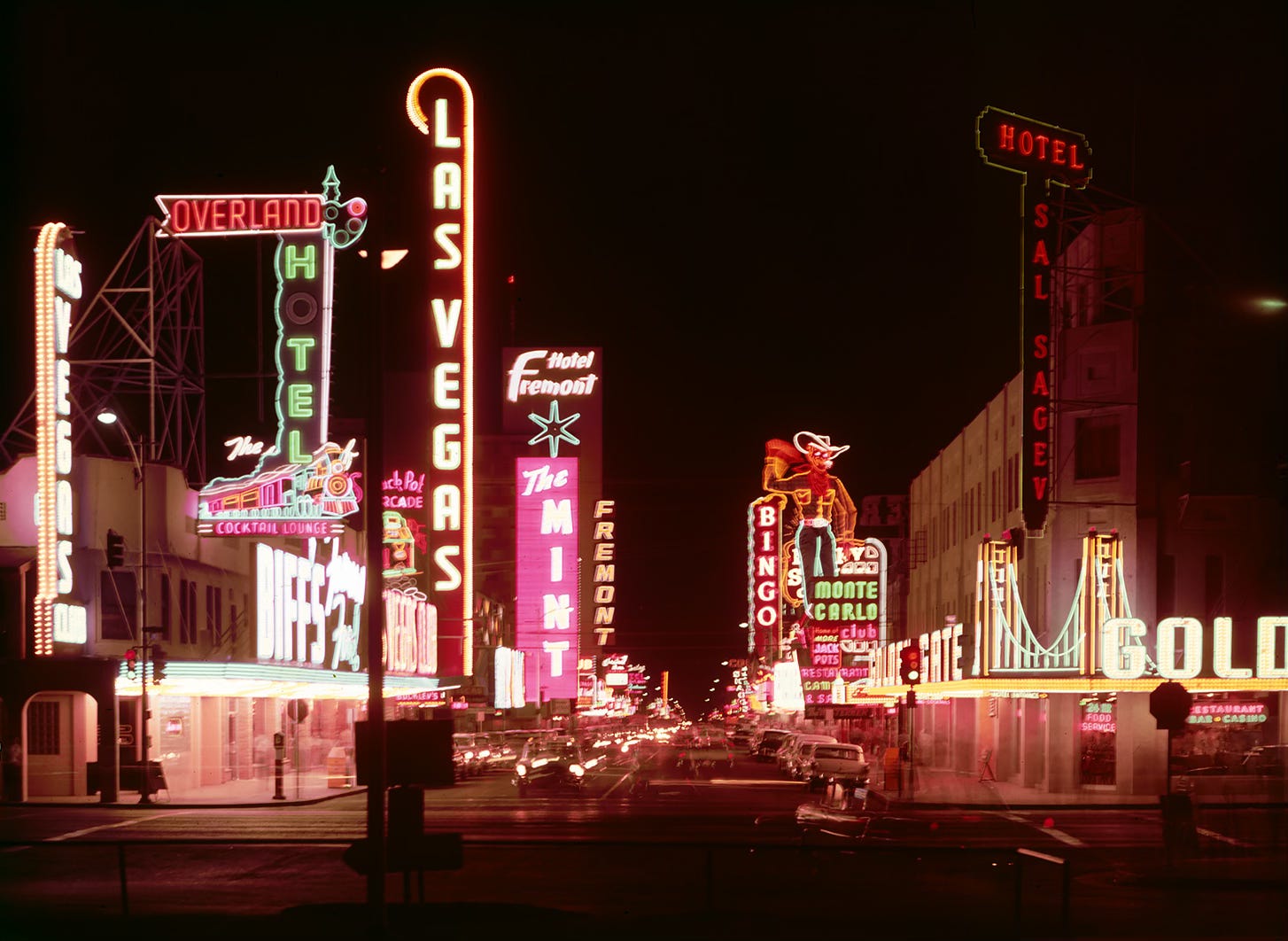
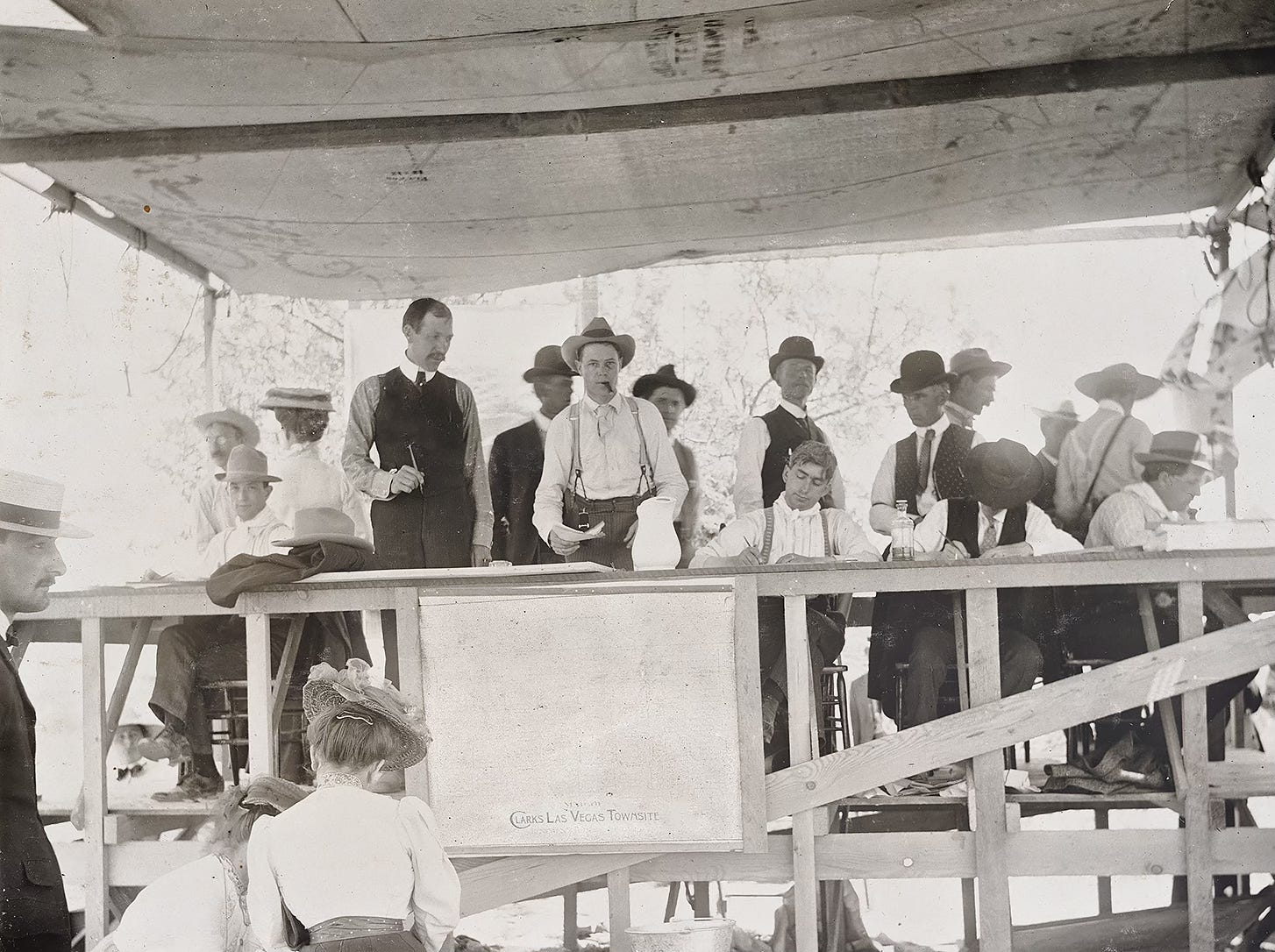
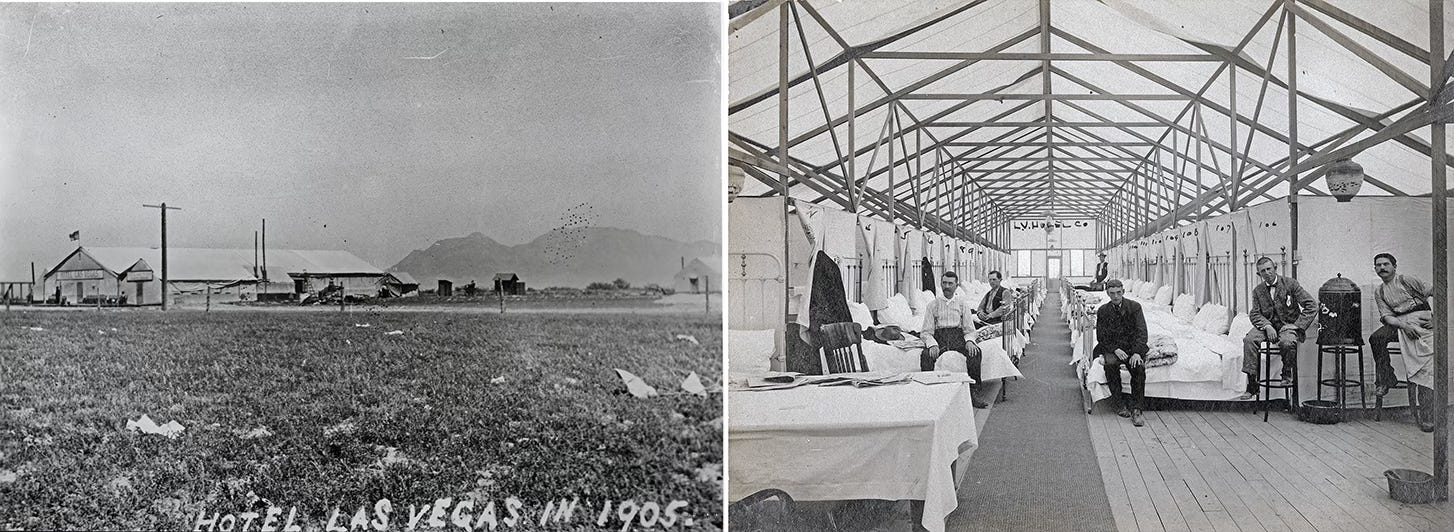

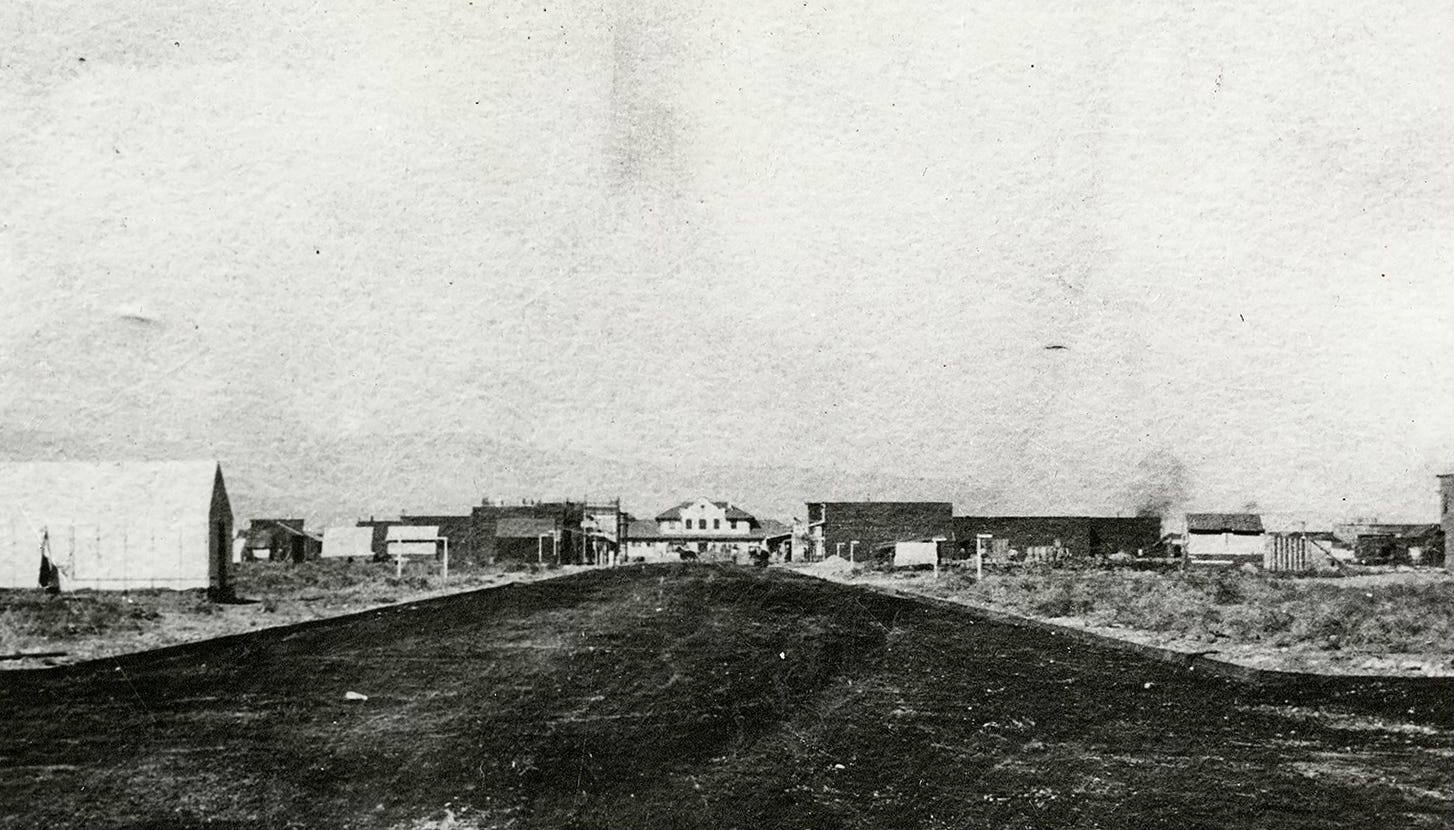
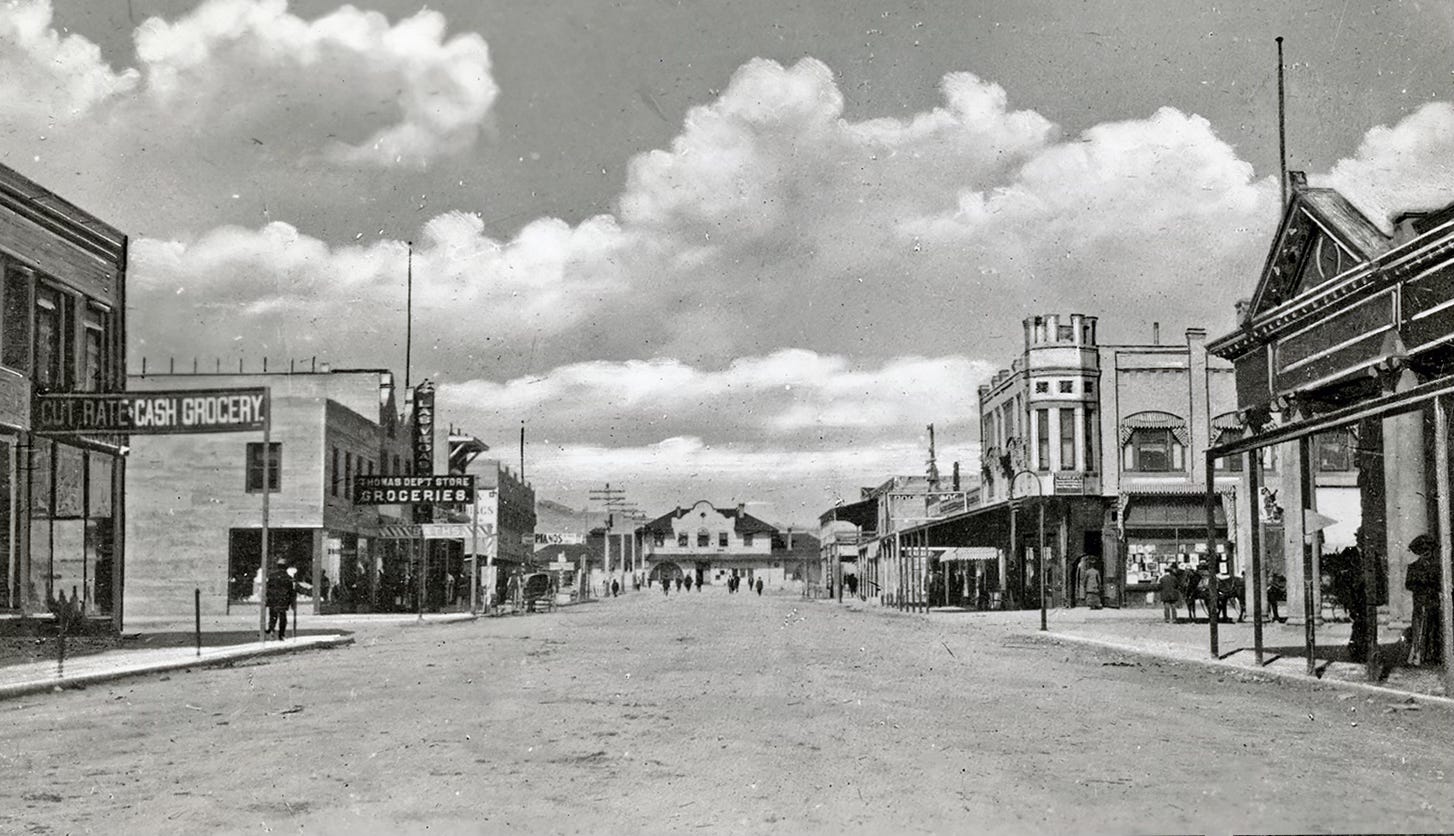
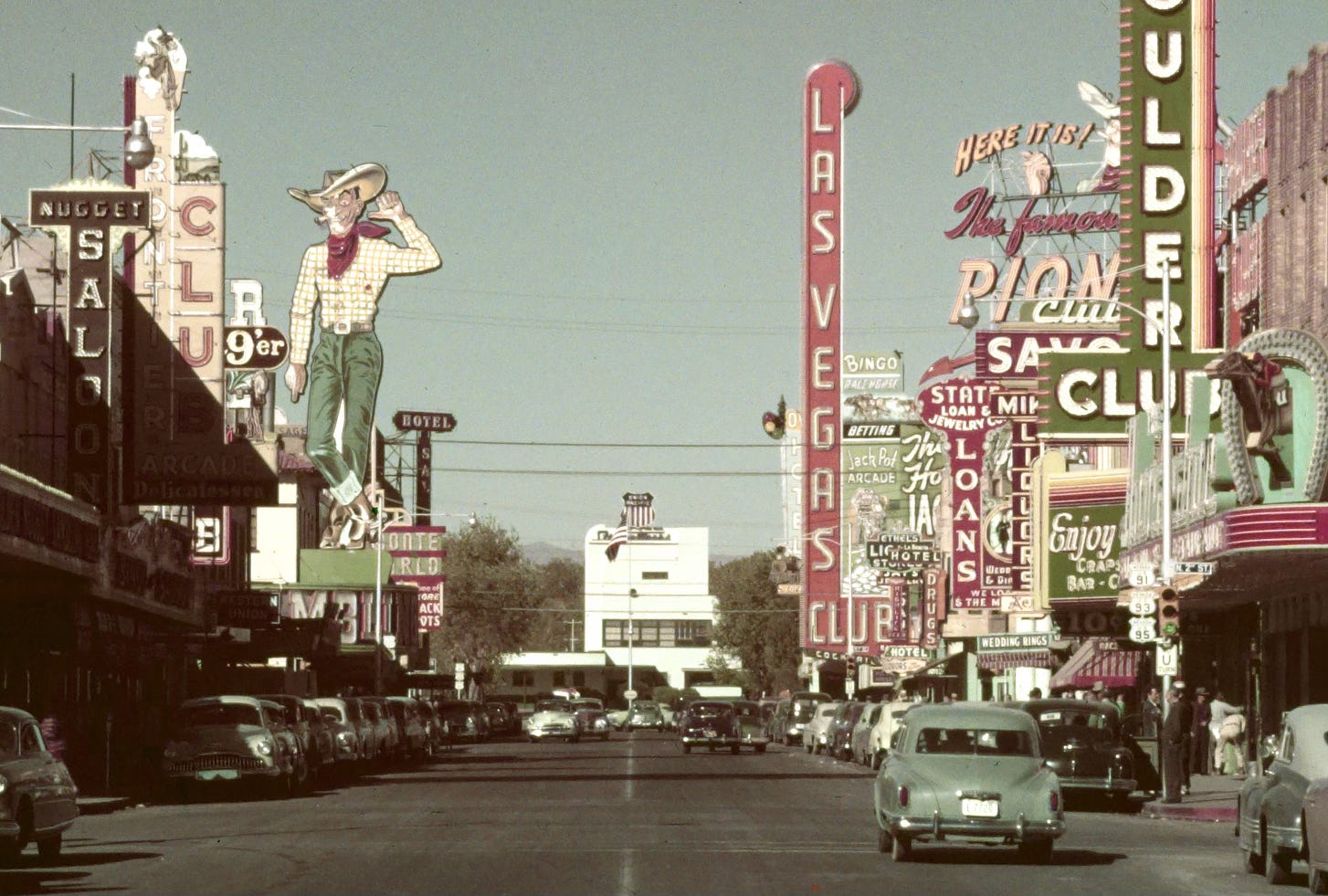
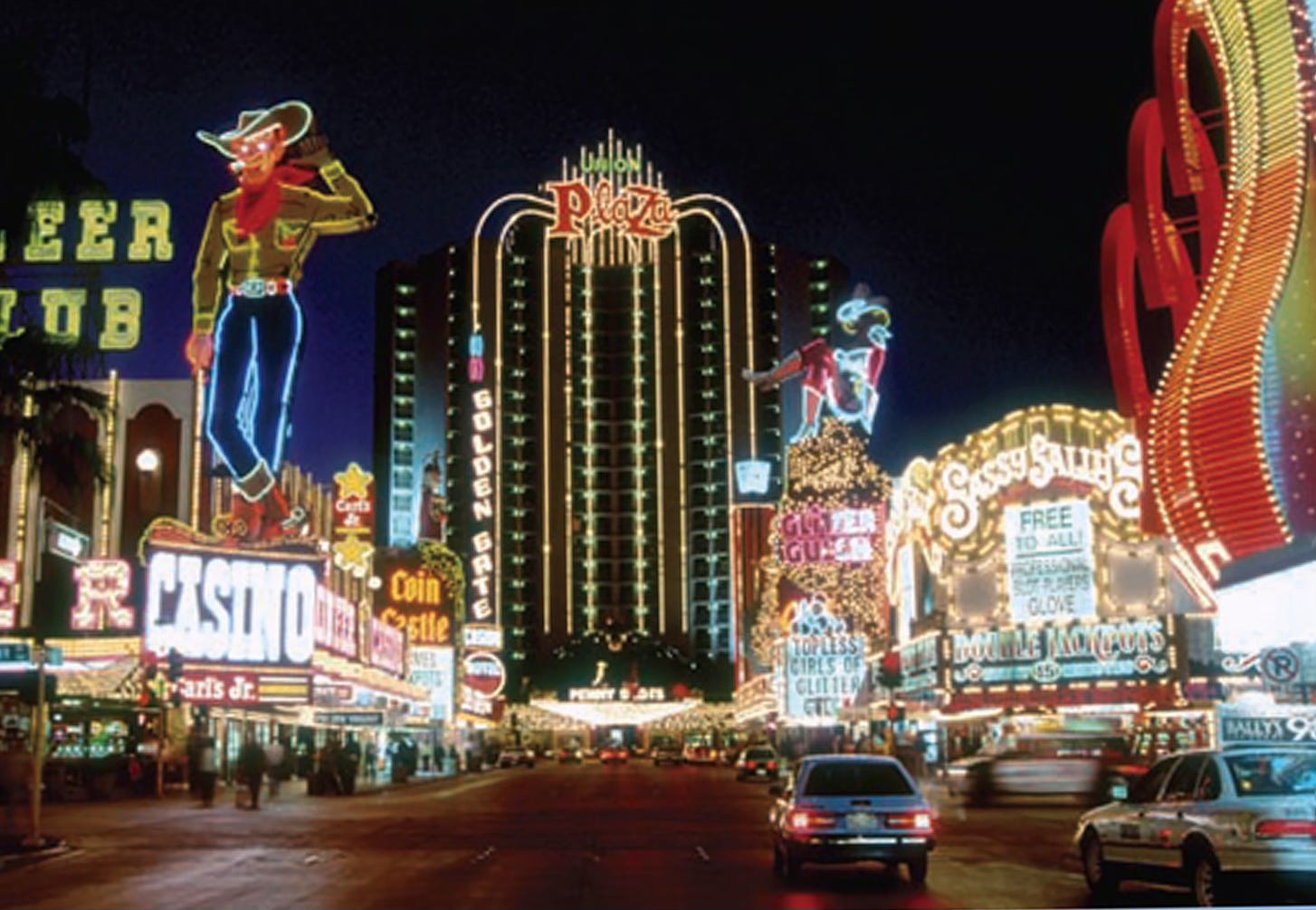
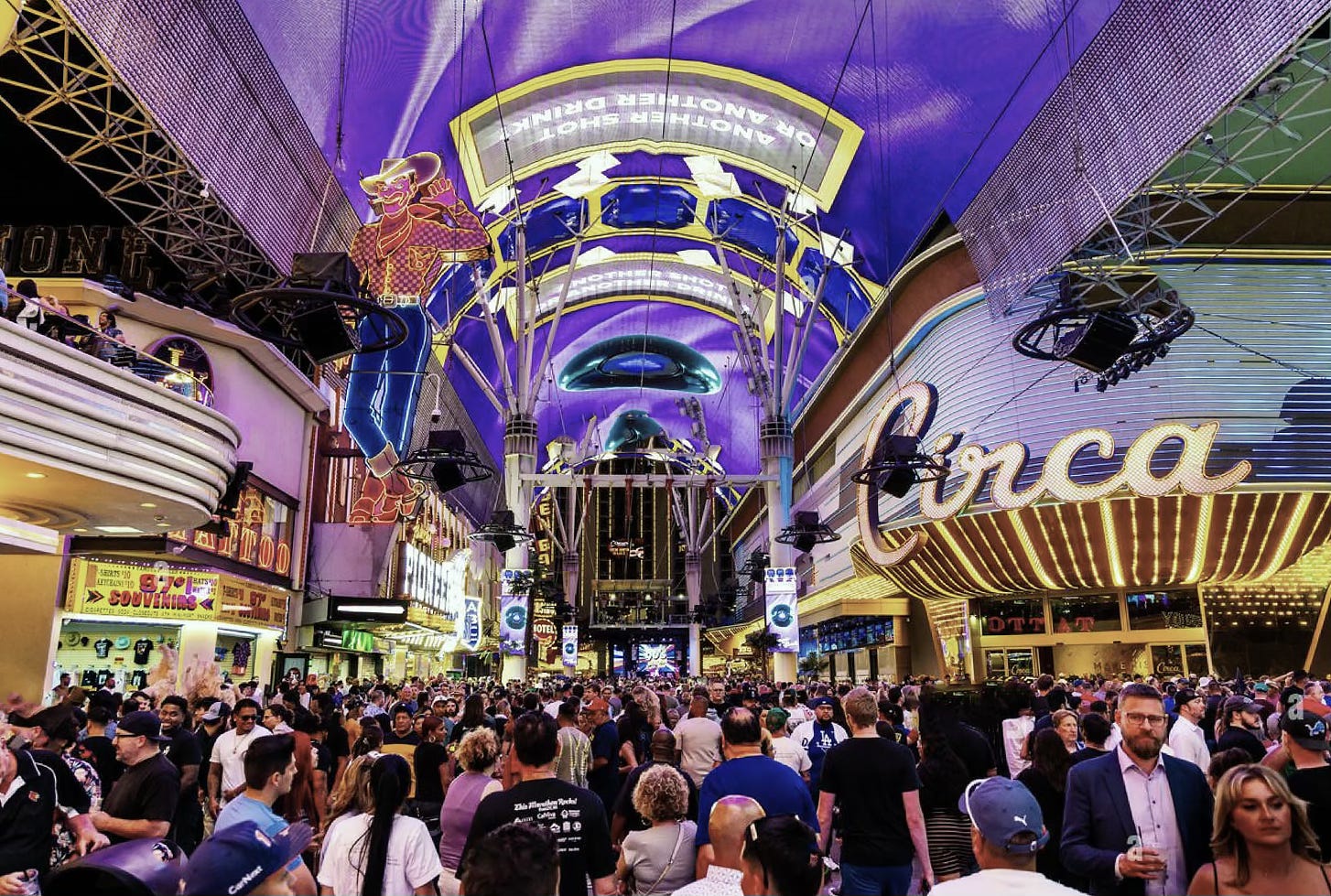
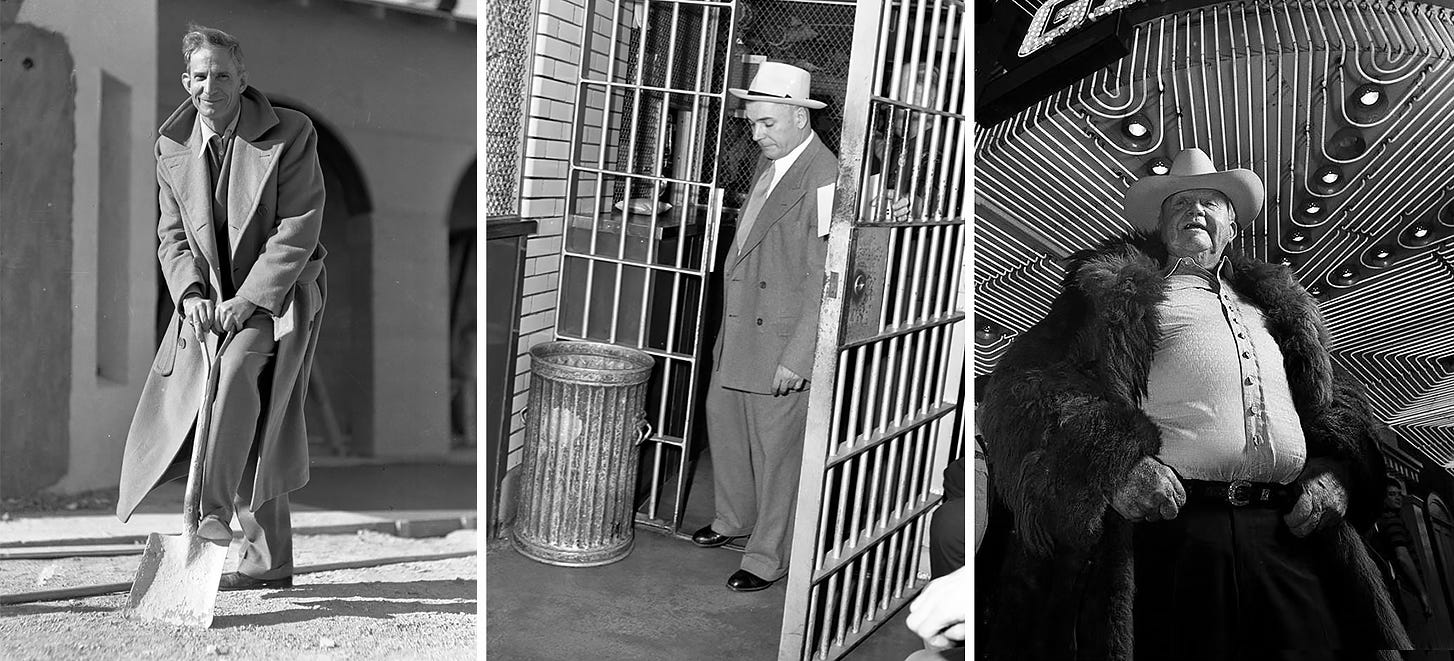

Great historical background, wonderful photos!
Really great piece. I hope you do a deep dive into a couple of these guys, the beginning of Las Vegas is really interesting.